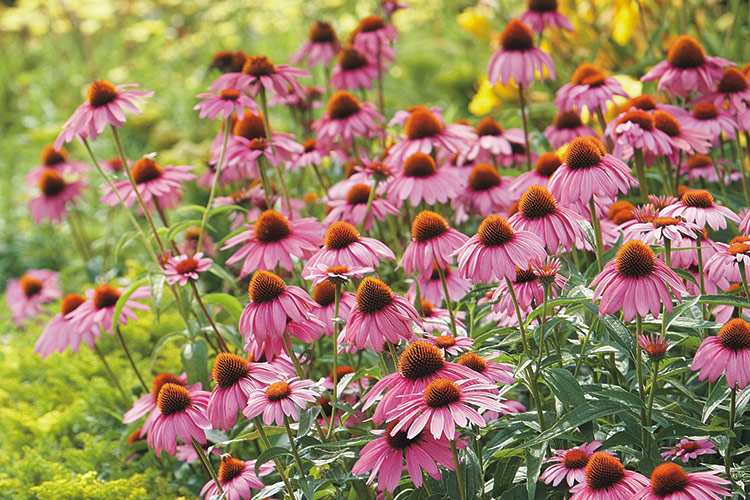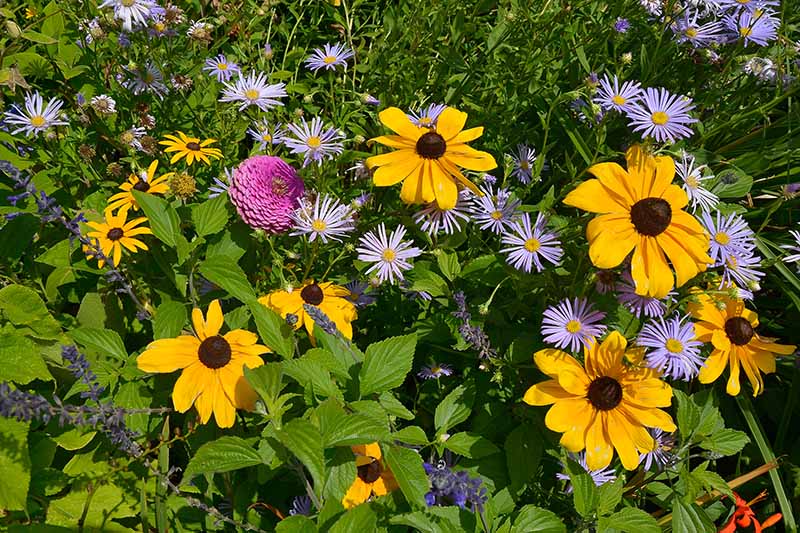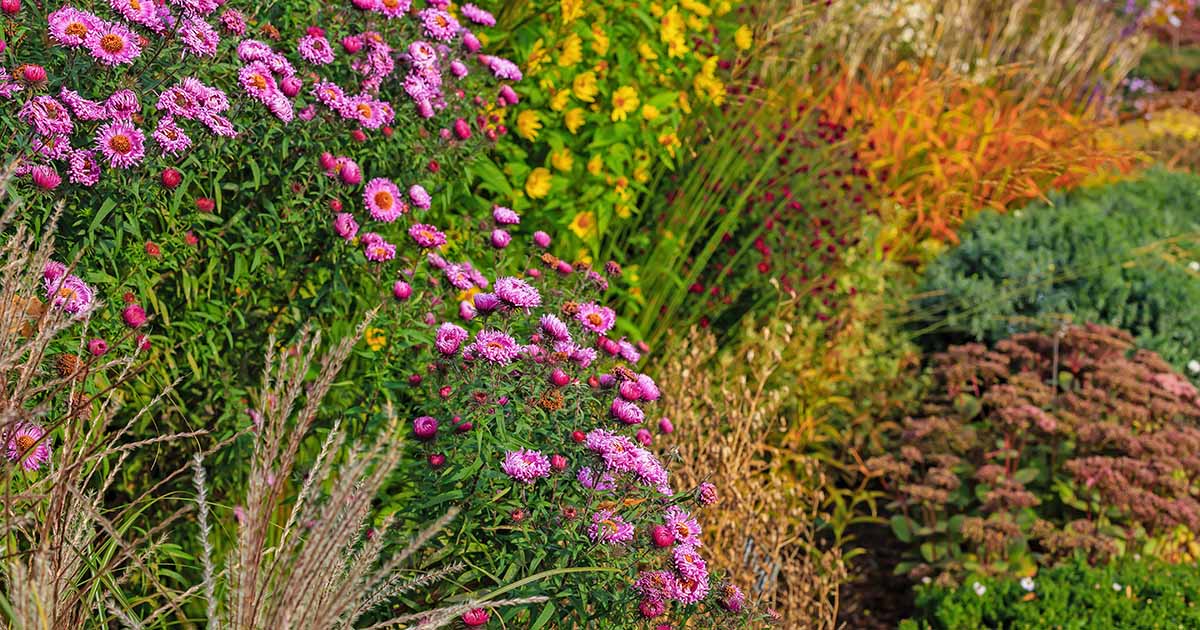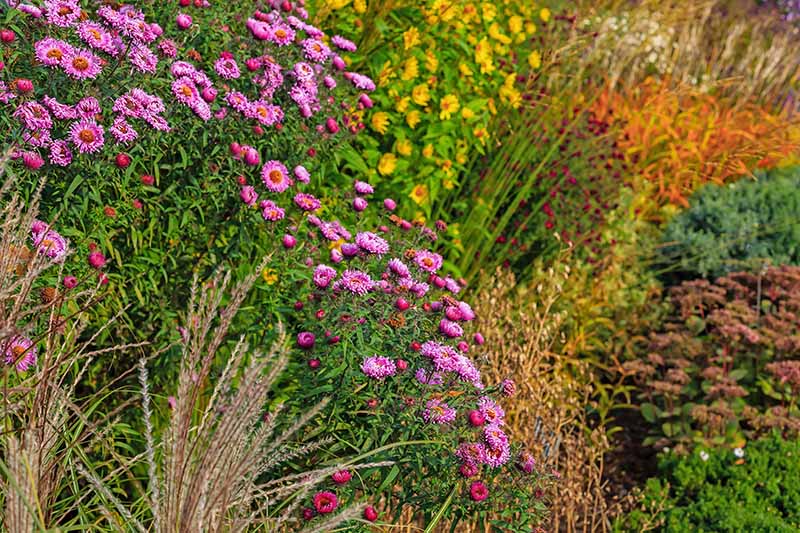Stunning Companion Plants For New England Asters
Stunning Companion Plants for New England Asters
New England asters are a beautiful addition to any garden, but they can look even more stunning when planted with the right companion plants. In this blog post, we will discuss some of the best companion plants for New England asters, as well as some tips on how to plant them together for a beautiful and harmonious display.
What are New England asters?
New England asters (Symphyotrichum novae-angliae) are tall, late-summer flowering perennials that are native to North America. They are known for their showy, daisy-like flowers that come in a variety of colors, including purple, blue, pink, and white. New England asters are relatively easy to care for and are drought tolerant, making them a good choice for gardens in many different climates.
Why plant companion plants with New England asters?
There are many reasons to plant companion plants with New England asters. Companion plants can help to:
- Enhance the beauty of your garden by providing contrast in color, texture, and height. *Attract beneficial insects, such as butterflies and bees, which will help to pollinate your flowers. *Discourage pests and diseases. *Improve the overall health and well-being of your plants.
When to plant companion plants with New England asters
The best time to plant companion plants with New England asters is in the spring or fall. When planting, make sure to choose companion plants that have similar water and sunlight requirements. You should also plant companion plants that are the same size or slightly taller than your New England asters, so that they don't overshadow them.
Here are some of the best companion plants for New England asters:
- Goldenrod: Goldenrod is a tall, late-summer flowering perennial that is native to North America. It is known for its bright yellow flowers that bloom in late summer and early fall. Goldenrod is a good companion plant for New England asters because it has similar water and sunlight requirements. It also attracts beneficial insects, such as butterflies and bees.
- Black-eyed Susan: Black-eyed Susan is a low-maintenance, drought-tolerant perennial that blooms from mid-summer to fall. It has bright yellow flowers with a dark brown center, which makes it a beautiful contrast to the blue and purple flowers of New England asters. Black-eyed Susan is also a good choice for attracting butterflies and bees.
- Blazing star: Blazing star is a tall, late-summer flowering perennial that is native to North America. It is known for its spikes of bright purple flowers that bloom in late summer and early fall. Blazing star is a good companion plant for New England asters because it has similar water and sunlight requirements. It also attracts beneficial insects, such as butterflies and bees.
- Yarrow: Yarrow is a low-maintenance, drought-tolerant perennial that blooms from mid-summer to fall. It has flat, daisy-like flowers that come in a variety of colors, including white, yellow, and pink. Yarrow is a good companion plant for New England asters because it has similar water and sunlight requirements. It also helps to deter pests and diseases.

- Coneflower: Coneflower is a tall, late-summer flowering perennial that is native to North America. It is known for its cone-shaped flowers that come in a variety of colors, including purple, red, and yellow. Coneflower is a good companion plant for New England asters because it has similar water and sunlight requirements. It also attracts beneficial insects, such as butterflies and bees.

Conclusion
New England asters are beautiful plants that can add a touch of late-summer color to any garden. By planting them with the right companion plants, you can create a stunning display that will attract beneficial insects and help to improve the overall health of your garden.
New England asters are beautiful, tall, late-blooming flowers that add a touch of autumnal color to any garden. But did you know that they can also attract beneficial insects and pollinators? The right companion plants can help to create a harmonious and productive ecosystem in your garden.
Some of the best companion plants for New England asters include:
- Joe Pye weed: This tall, herbaceous perennial has showy purple flowers that bloom in late summer and early fall. It attracts butterflies, bees, and other beneficial insects. Gardenia Inspiration
- Swamp milkweed: This native wildflower is a host plant for monarch butterflies. It has pale pink or white flowers that bloom in late summer and early fall. Gardenia Inspiration
- Dense blazing star: This tall, herbaceous perennial has spikes of bright purple flowers that bloom in late summer and early fall. It attracts butterflies, bees, and other beneficial insects. Gardenia Inspiration
- Cherokee sedge: This native sedge has delicate, feathery foliage and small, white flowers that bloom in late summer and early fall. It provides winter interest and helps to suppress weeds. Gardenia Inspiration
- Bur sedge: This native sedge has upright, clumping growth and small, brown flowers that bloom in late summer and early fall. It provides winter interest and helps to suppress weeds. Gardenia Inspiration
To learn more about New England aster companion plants, visit Gardenia Inspiration. This website provides a wealth of information on how to choose the right companion plants for your garden, as well as tips on how to plant and care for them.
FAQ of new england aster companion plants
- What are some good companion plants for New England aster?
New England aster is a late-season bloomer, so it can be a good companion for plants that bloom earlier in the season, such as coneflowers, black-eyed Susans, and sunflowers. It can also be planted with other late-blooming plants, such as goldenrod, sedum, and asters.
Here are some specific companion plants that can benefit New England aster:
- Coneflowers: Coneflowers attract pollinators, which can help New England aster to set seed.
- Black-eyed Susans: Black-eyed Susans have similar growing conditions to New England aster and can help to fill in the gaps in your garden.
- Sunflowers: Sunflowers are tall and provide shade for New England aster in the heat of the day.
- Goldenrod: Goldenrod is a nectar-rich plant that attracts pollinators, which can help New England aster to set seed.
- Sedum: Sedum is a drought-tolerant plant that can help to keep the soil moist around New England aster.
- Why is it important to choose companion plants for New England aster?
Choosing companion plants can help to improve the health and appearance of your New England asters. Companion plants can provide:
- Pollinators: Pollinators, such as bees and butterflies, help New England asters to set seed.
- Shade: Some companion plants, such as goldenrod, can provide shade for New England asters in the heat of the day.
- Moisture: Some companion plants, such as sedum, can help to keep the soil moist around New England asters.
- Disease resistance: Some companion plants, such as yarrow, can help to deter pests and diseases.
- What are some common pests and diseases that affect New England aster?
The most common pests that affect New England aster are aphids, spider mites, and Japanese beetles. The most common diseases that affect New England aster are powdery mildew, rust, and leaf spot.
You can control pests and diseases with natural methods, such as insecticidal soap, neem oil, or horticultural oil. You can also remove affected leaves or stems. If the infestation is severe, you may need to use a chemical pesticide.
- Where is the best place to plant New England aster?
New England aster prefers moist, well-drained soil and full sun. It can tolerate some shade, but it will not bloom as profusely.
If you live in an area with hot summers, you may want to plant New England aster in a spot that gets some afternoon shade.
- How do I care for New England aster?
New England aster is a relatively low-maintenance plant. It needs regular watering, especially during the first year after planting. It also benefits from an annual application of compost or fertilizer.
In the fall, you can deadhead the spent blooms to encourage new growth. You can also cut the plant back to the ground in the winter.
Image of new england aster companion plants
Here are 5 images of New England aster companion plants from Pinterest:
- Black-eyed Susan is a tall, yellow-flowered perennial that blooms in late summer and fall. It is a good companion for New England aster because it has similar growing conditions and flower color.

- Coneflower is another tall, late-blooming perennial that comes in a variety of colors, including purple, pink, and white. It is a good companion for New England aster because it attracts butterflies and other pollinators.

- Goldenrod is a low-growing, golden-flowered perennial that blooms in late summer and fall. It is a good companion for New England aster because it has similar growing conditions and adds a touch of fall color.

- Joe Pye Weed is a tall, purple-flowered perennial that blooms in late summer and fall. It is a good companion for New England aster because it attracts butterflies and other pollinators.
- Ornamental grass is a versatile plant that can add height, texture, and movement to a garden. It is a good companion for New England aster because it has similar growing conditions and can help to fill in empty spaces in the garden.

Post a Comment for " Stunning Companion Plants For New England Asters"